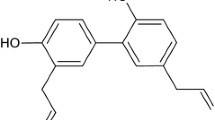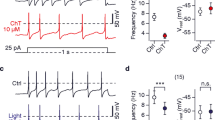Abstract
Methyl mercury (MeHg) is a widespread toxicant with major actions on the nervous system. Since the function of neurons depends on voltage gated ion channels, we examined the effects of micromolar concentrations of methyl mercury on voltage-activated calcium, potassium and sodium channel currents of cultured rat dorsal root ganglion (DRG) neurons. The cells, which were obtained from 2–4 day old rat pups, were whole-cell patch-clamped. Currents were separated by selective intra-and extracellular solutions as well as specific depolarizing voltage steps. We did not distinguish between different calcium, potassium or sodium channel subtypes.
All three types of voltage-activated currents were irreversibly reduced by McHg in a concentration dependent manner. Voltage-activated calcium and potassium channel currents were more sensitive to MeHg (Calcium: IC50 = 2.6±0.4 μM; Potassium: IC50 = 2.2±0.3 μM) than voltage-activated sodium channels (IC50 = 12.3±2.0 μM). The Hill coefficients for the reduction of the currents were calculated as ∼1 for calcium and potassium channel currents and as 1.7 for sodium currents. In the cases of the voltage-activated calcium and sodium channel currents the reduction was clearly use dependent. Higher concentrations of McHg (≥ 5 μM) resulted in a biphasic change in the holding membrane current at the potential of −80 mV in ∼25% of the cases.
Similar content being viewed by others
References
Akasu T, Nishimura T, Tokimasa T (1990) Calcium-dependent chloride current in the neurones of the rabbit pelvic parasympathetic ganglia. J Physiol 422:303–320
Albers JW Kallenbach LR, Fine LJ, Langolf GD, Wolfe RA, Donofrio PD, Alessi AG, Stolp-Smith KA, Bromberg MB (1988) Neurological abnormalities associated with remote occupational element mercury exposure. Ann Neurol 5:651–659
Aschner M, Vitarella D, Wagoner DE, Rising L (1994) Metallothionein attenuates methyl mercury toxicity in astrocytes (Abstract). Neurotoxicology 15:10–11
Atchison WD, Narahashi T (1982) Methyl mercury induced depression of neuromuscular transmission in the rat. Neurotoxicology 3:37–50
Büsselberg D, Platt B, Michael D, Carpenter DO, Haas HL (1994) Mammalian voltage-activated calcium channel currents are blocked by Pb2+, Zn2+ and Al3+. J Neurophysiol 17:1491–1497
Chad JE, Eckert R (1986) An enzymatic mechanism for calcium current inactivation in dialyzed Helix neurones. J Physiol Lond 378:31–51
Clarkson TW (1987) Metal toxicity in the central nervous system. Environ Health Perspect 19:297–307
Currie KPM, Scott RH (1992) Calcium-activated currents in cultured neurones from rat dorsal root ganglia. Br J Pharmacol 106:593–602
Graff RD, Philbert MA, Lowndes HE, Reuhl KR (1993) The effect of glutathione depletion on methyl mercury induced microtubule disassembly in cultured embryonal carcinoma cells. Toxicol Appl Pharmacol 120:20–28
Goldin AL (1995) Voltage gated sodium channels. In: North, RA (ed) Handbook of receptors and channels: Ligand- and voltage-gated ion channels, CRC Press, Boca Raton, p 73
Gutknecht J (1981) Inorganic mercury (Hg2+) transport through lipid bilayer membranes. J Membr Biol 61:61–66
Hare MF, Atchison WD (1991) Comparative action of methyl mercury and divalent inorganic mercury on nerve terminal and intraterminal mitochondrial membrane potentials. J Pharmacol Exp Ther 261:166–172
Hare MF, McGinnis KM, Atchison WD (1993) Methyl mercury increases intracellular concentrations of Ca2+ and heavy metals in NG108–15 cells. J Pharmacol Exp Ther 266:1626–1635
Hille B (1992) Ionic channels of excitable membranes, 2nd ed., Sinauer Associates, Sunderland, Massachusetts
Kruger KE, Sossin WS, Sacktor TC, Bergold PJ, Beushausen S, Schwartz JH (1991) Cloning and characterization of Ca2+-dependent and Ca2+-independent PKCs expressed in Aplysia sensory cells. J Neurosci 11:2303–2313
Leonhardt R, Pekel M, Platt B, Haas HL, Büsselberg D (1996) Voltage-activated calcium channel currents of rat DRG neurons are reduced by mercuric chloride (HgCl2) and methyl mercury (CH3HgCl). Neurotoxicology 17:85–91
Mayer ML (1985) A calcium-activated chloride current generates the after-depolarization of rat sensory neurones in culture. J Physiol 364:217–239
McCleskey EW (1994) Calcium channels: cellular roles and molecular mechanisms. Curr Opin Neurobiol 4:304–312
Mintz IM, Adams ME, Bean BP (1992) P-type calcium channels in rat central and peripheral neurons. Neuron 9:85–95
Møller-Madsen B (1991) Localization of mercury in the CNS of the rat, III. Oral administration of methylmercuric chloride (CH3HgCl). Fund Appl Toxicol 16:172–187
Musch HR, Bornhausen M, Kriegel H, Greim H (1978) Methyl mercury chloride induces learning deficits in prenatally treated rats. Arch Toxicol 40:103–108
Oortgiesen M, van Kleef RGDM, Vijverberg HPM (1990) A novel type of ion channel activated by Pb2+, Cd2+ and Al3+ in cultured mouse neuroblastoma cells. J Membr Biol 113:261–268
Roy ML, Narahashi T (1992) Differential properties of tetrodotoxin-sensitive and tetrodotoxin-resistant sodium channels in rat dorsal root ganglion neurons. J Neurosci 12:2104–2111
Rudy B (1988) Diversity and ubiquity of K channels. Neuroscience 25:729–749
Sarafian TA (1993) Methyl mercury increases intracellular Ca2+ and inositolphosphate levels in cultured cerebellar granule neurons. J Neurochem 61:648–657
Schmidt F, Waldegger S, Herzer T, Biber J, Markovich D, Murer H, Busch AE, Lang F (1995) Heavy metal mediated inhibition of rBAT induced amino acid transport (Abstract). In: Deutsche Physiologische Gesellschaft: Abstracts of the Spring Meeting (74th meeting). Pflügers Arch 429:R65
Shafer TJ, Atchison WD (1991) Methyl mercury blocks N- and L-Type Ca++ channels in nerve growth factor-differentiated pheochromocytoma (PC12) cells. J Pharm Exp Ther 258:149–157
Tsien RW, Lipscombe D, Madison DV, Bley KR, Fox AP (1988) Multiple types of neuronal calcium channels and their selective modulation. Trends Neurosci 11:431–438
Wood JN, Winter J, James IF, Rong HP, Yeats J, Bevan S (1988) Capsaicin-induced ion fluxes in dorsal root ganglion cells in culture. J Neurosci 8:3208–3220
Author information
Authors and Affiliations
Rights and permissions
About this article
Cite this article
Leonhardt, R., Haas, H. & Büsselberg, D. Methyl mercury reduces voltage-activated currents of rat dorsal root ganglion neurons. Naunyn-Schmiedeberg's Arch Pharmacol 354, 532–538 (1996). https://doi.org/10.1007/BF00168447
Received:
Accepted:
Issue Date:
DOI: https://doi.org/10.1007/BF00168447




